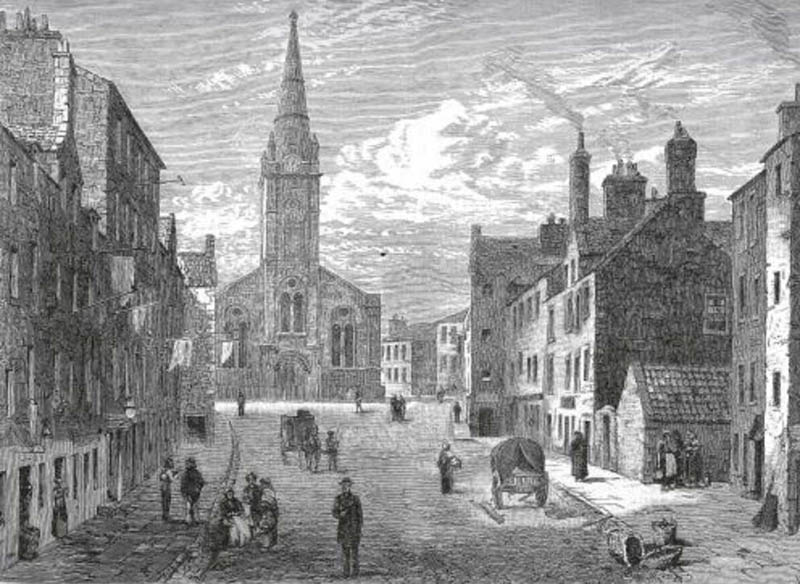St. Thomas’s Church

St Thomas’s Church was built in 1840 and endowed by Sir John Gladstone of Fasque in Kincardinshire. He was the son of Thomas Gladstones (a Leith corn merchant and Kirk treasurer of North Leith) and had been brought up in the Coalhill area. After starting up in business in Leith, he moved to Liverpool where he made a fortune in the corn trade. His youngest son, William Ewart Gladstone, was well known in the 19th century as a politician (he was for a brief period the Member of Parliament for Leith) and he served several terms as Prime Minister.
Sir John Gladstone was inspired to found this new church after the death of his wife in 1835 following a long period of illness. He originally thought in terms of building a hospital for women suffering from incurable diseases. After investigating the area around his birthplace on Coalhill he decided to build a church, manse and school as well as the hospital or almshouses. The almshouses provided accommodation for ten women. The whole scheme was designed by John Henderson and was built on a site at the top of Sheriff Brae. A new parish was created from parts of South Leith Parish together with the old St Leonard’s Lands from North Leith Parish. The illustration, which is taken from Grant’s ‘Old and New Edinburgh’ published in 1880, shows the view along Sheriff Brae to St Thomas’s Church.
In April 1916 the manse was destroyed by a bomb dropped during a Zeppelin raid. The minister was conducting a service in North Leith Parish Church at the time and so was uninjured. The church survived the raid undamaged and continued in use until May 1975 when the congregation united with that of Junction Road Church which then became St Thomas’s Junction Road Church.

In 1976 the building became the Sikh Temple for Edinburgh, the Lothians and Fife (Guru Nanak Gurdwara Edinburgh). About 400 people worship there – more on festive occasions. In 1989 the building was the target of arson. It quickly recovered and was re-inaugurated by the Lord Provost of Edinburgh at a large multi-faith gathering.